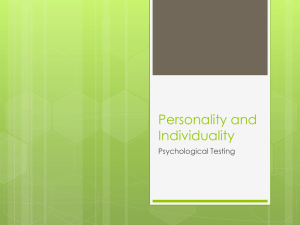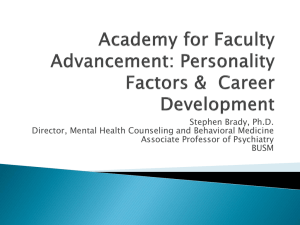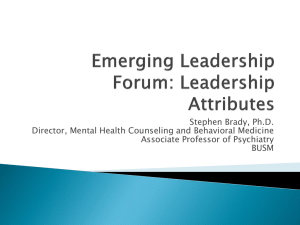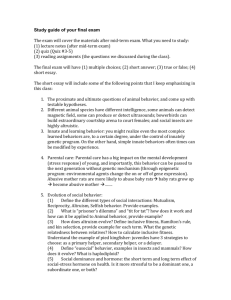Unit Overview (Schedule, Vocab)
advertisement
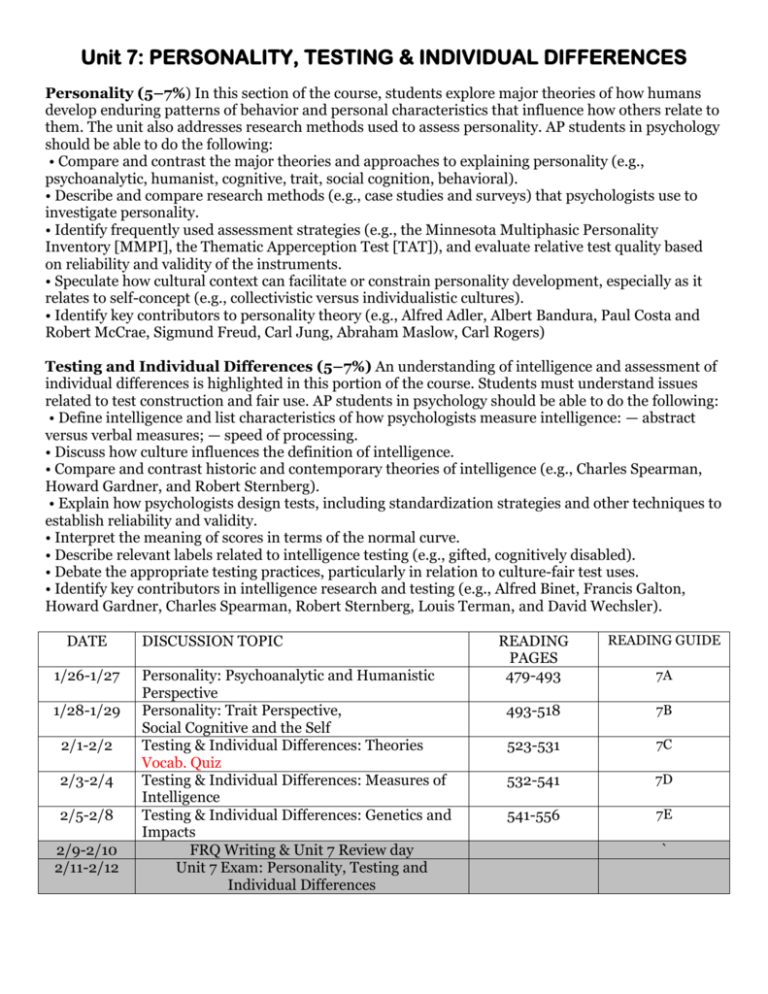
Unit 7: PERSONALITY, TESTING & INDIVIDUAL DIFFERENCES Personality (5–7%) In this section of the course, students explore major theories of how humans develop enduring patterns of behavior and personal characteristics that influence how others relate to them. The unit also addresses research methods used to assess personality. AP students in psychology should be able to do the following: • Compare and contrast the major theories and approaches to explaining personality (e.g., psychoanalytic, humanist, cognitive, trait, social cognition, behavioral). • Describe and compare research methods (e.g., case studies and surveys) that psychologists use to investigate personality. • Identify frequently used assessment strategies (e.g., the Minnesota Multiphasic Personality Inventory [MMPI], the Thematic Apperception Test [TAT]), and evaluate relative test quality based on reliability and validity of the instruments. • Speculate how cultural context can facilitate or constrain personality development, especially as it relates to self-concept (e.g., collectivistic versus individualistic cultures). • Identify key contributors to personality theory (e.g., Alfred Adler, Albert Bandura, Paul Costa and Robert McCrae, Sigmund Freud, Carl Jung, Abraham Maslow, Carl Rogers) Testing and Individual Differences (5–7%) An understanding of intelligence and assessment of individual differences is highlighted in this portion of the course. Students must understand issues related to test construction and fair use. AP students in psychology should be able to do the following: • Define intelligence and list characteristics of how psychologists measure intelligence: — abstract versus verbal measures; — speed of processing. • Discuss how culture influences the definition of intelligence. • Compare and contrast historic and contemporary theories of intelligence (e.g., Charles Spearman, Howard Gardner, and Robert Sternberg). • Explain how psychologists design tests, including standardization strategies and other techniques to establish reliability and validity. • Interpret the meaning of scores in terms of the normal curve. • Describe relevant labels related to intelligence testing (e.g., gifted, cognitively disabled). • Debate the appropriate testing practices, particularly in relation to culture-fair test uses. • Identify key contributors in intelligence research and testing (e.g., Alfred Binet, Francis Galton, Howard Gardner, Charles Spearman, Robert Sternberg, Louis Terman, and David Wechsler). DATE 1/26-1/27 1/28-1/29 2/1-2/2 2/3-2/4 2/5-2/8 2/9-2/10 2/11-2/12 DISCUSSION TOPIC Personality: Psychoanalytic and Humanistic Perspective Personality: Trait Perspective, Social Cognitive and the Self Testing & Individual Differences: Theories Vocab. Quiz Testing & Individual Differences: Measures of Intelligence Testing & Individual Differences: Genetics and Impacts FRQ Writing & Unit 7 Review day Unit 7 Exam: Personality, Testing and Individual Differences READING PAGES 479-493 READING GUIDE 493-518 7B 523-531 7C 532-541 7D 541-556 7E 7A ` VOCABULARY psychoanalysis psychodynamic perspective free association unconscious id superego ego psychosexual stages fixation defense mechanisms repression regression reaction formation projection rationalization displacement sublimation denial Oedipus complex collective unconscious Sigmund Freud Alfred Adler Carl Jung Karen Horney PERSONALITY projective tests Thematic Apperception Test (TAT) Rorschach inkblot test personality inventory Minnesota Multiphasic Personality Inventory (MMPI) social cognitive perspective self-concept unconditional positive regard unconditional positive regard humanistic psychology reciprocal determinism external locus of control internal locus of control spotlight effect positive psychology self-serving bias collectivism individualism Albert Bandura Martin Seligman Gordon Allport Raymond Cattell Hans Eysenck Paul Costa Robert McCrae Abraham Maslow Carl Rogers TESTING AND INDIVIDUAL DIFFERENCES Intelligence test Standardization Down syndrome Intelligence Normal curve Stereotype threat General intelligence (g) Bias in Testing Spearman – The “g” factor Types of reliability (splitNature v. Nurture: Intelligence Factor analysis half, equivalent form Savant syndrome reliability, test-retest) Alfred Binet Emotional intelligence (EQ) Types of validity (face, David Wechsler ---Goleman content, criterion, Francis Galton Mental age construct) Stanford-Binet (Test) Intelligence quotient (IQ) Achievement tests Aptitude tests WAIS (test) Howard Gardner Robert Sternberg Charles Spearman Lewis Terman

